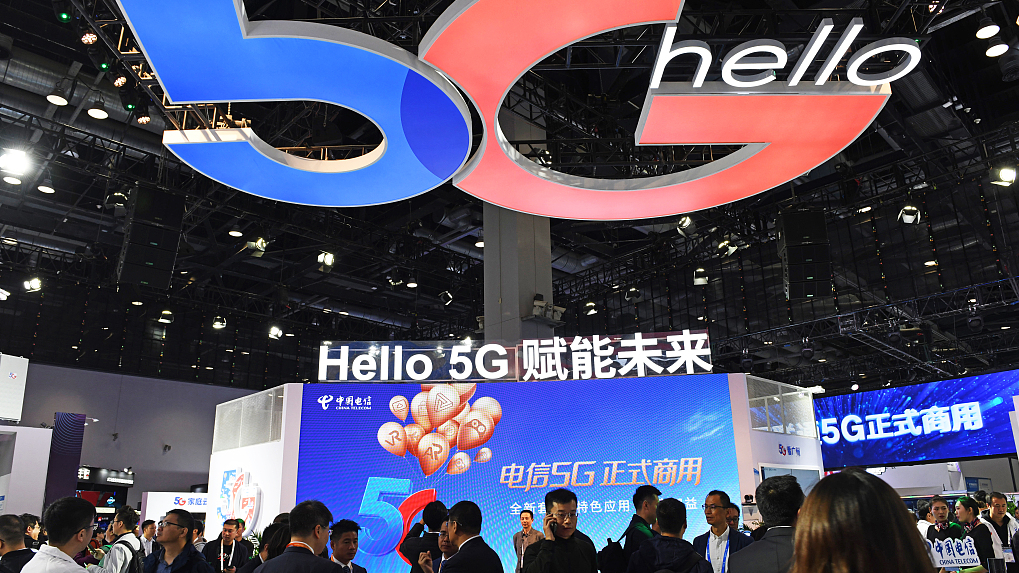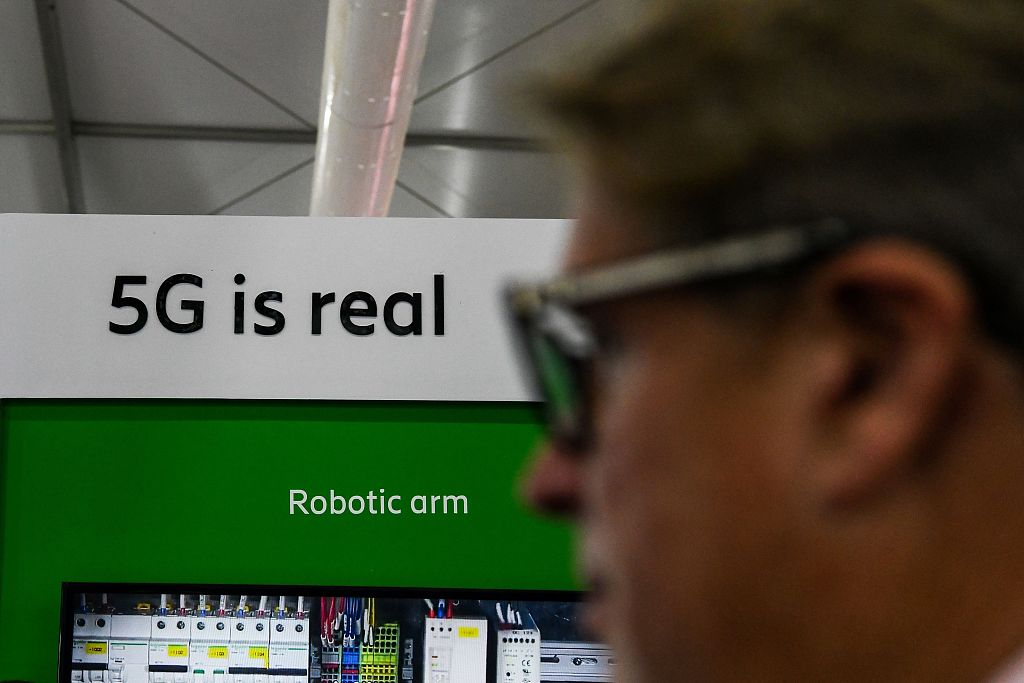
PT Expo China 2019 opens in Beijing, China, October 31. /VCG Photo
PT Expo China 2019 opens in Beijing, China, October 31. /VCG Photo
Editor's note: Ravish Bhatia is a Yenching Scholar at Peking University. The article reflects the author's opinions, and not necessarily those of CGTN.
At the recently concluded World Economic Forum (WEF) India Economic Summit in New Delhi, Wilbur Ross, the U.S. Secretary of Commerce had a tough job to play. Sitting between Indian Commerce and Industry Minister Piyush Goyal and Sunil Mittal, chairman of Bharti Enterprises, one of India's leading telecommunications companies, Ross' job was to convince both the Indian telecom industry and the government to not allow Huawei's 5G technology in India, noting that there were "genuine security issues" regarding Huawei's 5G gear.
India, the world's second-largest telecommunication market with a subscriber base of 1.2 billion, is stuck in a political quagmire between China and the U.S. over its decision on whether or not to allow Huawei's 5G services in the country. Even though, just a day before the WEF summit, Indian Foreign Minister S Jaishankar while speaking at the Heritage Foundation in Washington, said that 5G was a telecom issue and India would "largely take a bilateral approach," the fact remains that the uncertainty over the issue caused by the political confusion and technological complexity is hurting the consumers.
Chen Zhaoxiong, vice minister of industry and information technology of China, announced launching of 5G services in 50 cities in China on Thursday at the ongoing PT Expo. However, there is still no clear sign on when 5G services will be available in other countries like India, which rely on foreign technology. The longer the uncertainty remains, the longer the telecom subscribers wait for the plethora of opportunities that 5G can offer.

A 5G display at the India Mobile Congress 2018 in New Delhi, India, October 25, 2018. /VCG Photo
A 5G display at the India Mobile Congress 2018 in New Delhi, India, October 25, 2018. /VCG Photo
The Indian industry is fairly receptive to having Chinese 5G services. Speaking next to Ross, Sunil Mittal, whose company is one of the leaders in the Indian telecom market and uses products by all three giants – Huawei, Erricson and Nokia, argued for allowing Huawei to participate in the 5G rollout as a way to leverage competition, price and service quality. But whether such benefits outweigh the potential security cost is still keeping governments weary – this is a serious concern which is only made more serious by the complexity involved in understanding the technology. The fact remains that since 5G's core and peripheral infrastructures are not separate, a backdoor can be easily used to infiltrate the entire system.
The Indian foreign minister's response on this issue to take up the matter through a bilateral approach should encourage Beijing. It is a sign that India is willing to engage and make a final decision based on the merits of the argument, rather than merely responding to political pressure by any third party. Given the history that India and China share, the need therefore is for the two countries to work together and for Beijing to give New Delhi the confidence against potential advertent and inadvertent risks that characterize the technology.
India is one of the major telecommunication markets for the tech giants supplying 5G infrastructure and the competition to win contracts is high. It plans to soon roll out 5G trials and is expected to auction airwaves for 5G services before March of next year. Therefore the time to make a decision is ticking and a lack of action on this front could mean that the rollout of an important technology in the world is held back because of political differences.
The biggest loser in this confusion will be the consumer.
(If you want to contribute and have specific expertise, please contact us at opinions@cgtn.com.)